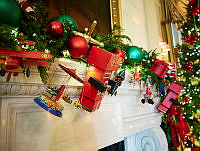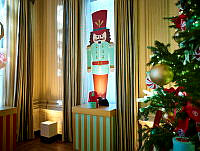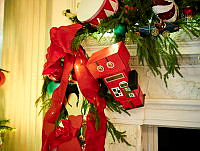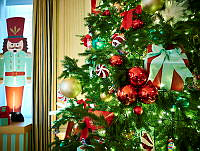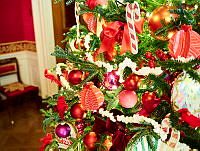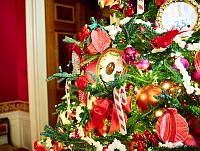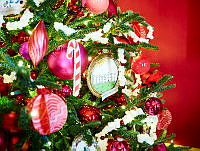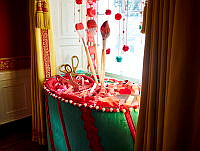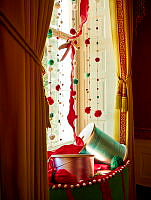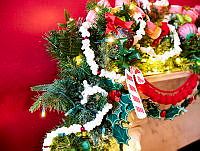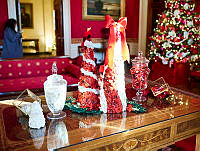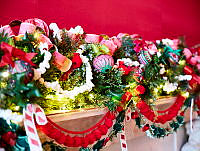A Tribute to Pat Nixon on the 100th Anniversary of Her Birth (March 16, 2012)
Copyright © White House Historical Association. All rights reserved under international copyright conventions. No part of this article may be reproduced or utilized in any form or by any means, electronic or mechanical, including photocopying, recording, or by any information storage and retrieval system, without permission in writing from the publisher. Requests for reprint permissions should be addressed to books@whha.org
Early Years
Born Thelma Catherine Ryan on March 16, 1912, in Ely, Nevada, “Pat” Nixon acquired her nickname from her father who called her his “St. Patrick’s babe in the morn.” The Ryan family moved to California and settled on a small truck farm near Los Angeles—a life of hard work with few luxuries. When her mother died in 1925, 13-year-old Pat assumed household duties for her father and two older brothers. At 18, she lost her father and determined to continue her education. Mrs. Nixon worked her way through the University of Southern California and graduated cum laude in 1937. Pat Ryan met Richard Nixon at a Little Theater group in Whittier when they were cast in the same play where she had gained a position as a high-school teacher. They were married on June 21, 1940.
During World War II, she worked as a government economist while Richard Nixon served in the navy. She campaigned tirelessly at his side in 1946 when he entered politics and saw him elected to the vice presidency on the ticket with Dwight D. Eisenhower in 1952. When her husband ran unsuccessfully for president in 1960, Mrs. Nixon was prominent in the campaign and was again at his side when he won in 1968. Despite the demands of official life, the Nixons were devoted parents to their two daughters, Tricia (Mrs. Edward Cox) and Julie (Mrs. David Eisenhower).
First Lady of the United States
One of Mrs. Nixon’s first initiatives as First Lady was to announce a program encouraging volunteerism—she referred to it as “the spirit of people helping people.” Believing firmly in the power of grass roots organizations, she toured local towns and villages enlisting thousands of volunteers to carry out a wide variety of people programs at the community level. From the very beginning she was keenly aware of the need to support a program for the acquisition of artwork and objects for the White House. Pat Nixon took great pride in the fine antiques and significant paintings in the mansion and played a major role in adding more than 600 paintings and furnishings to the collection.
Seeking to make the presidency more accessible, she made the gardens and grounds of the White House available to the public in the summer and spring, hosting tours there for the first time in nearly a century. She opened the mansion during the holiday season in the evenings for “Candlelight Tours” so that working-class families could see the decorations. She arranged for the White House and the nearby monuments to be lighted at night so that they would be visible and identifiable by drivers and travelers flying into or out of the Capitol.
For the visually, hearing and physically impaired people visitors, she created special tours that gave full access to the rooms and history of the house. As hostess she initiated a series of performances by artists in varied American traditions from bluegrass to opera and invited hundreds of average American families to nondenominational Sunday services in the East Room. She would routinely go down from the family quarters to greet tourists and pose for photographs with people on the public tour.
Travels with her husband included the historic visit to the People’s Republic of China and the summit meeting in the Soviet Union. Her first solo trip was a journey of compassion to take relief supplies to earthquake victims in Peru. Later Mrs. Nixon visited Africa and South America with the unique diplomatic standing of personal representative of the president.
Mrs. Nixon met the troubled days of Watergate with dignity. “I love my husband,” she said, “I believe in him, and I am proud of his accomplishments.” In her retirement, she took great pleasure in her grandchildren and gardening. She died at home in Park Ridge, New Jersey, on June 22, 1993. Her husband followed her in death ten months later. She and the former president are buried at the Richard Nixon Library and Birthplace in Yorba Linda, California.

Pat Nixon and former first lady Lady Bird Johnson unveil the White House acquisition of James Madison’s 1816 portrait by John Vanderlyn, May 28, 1970.











































